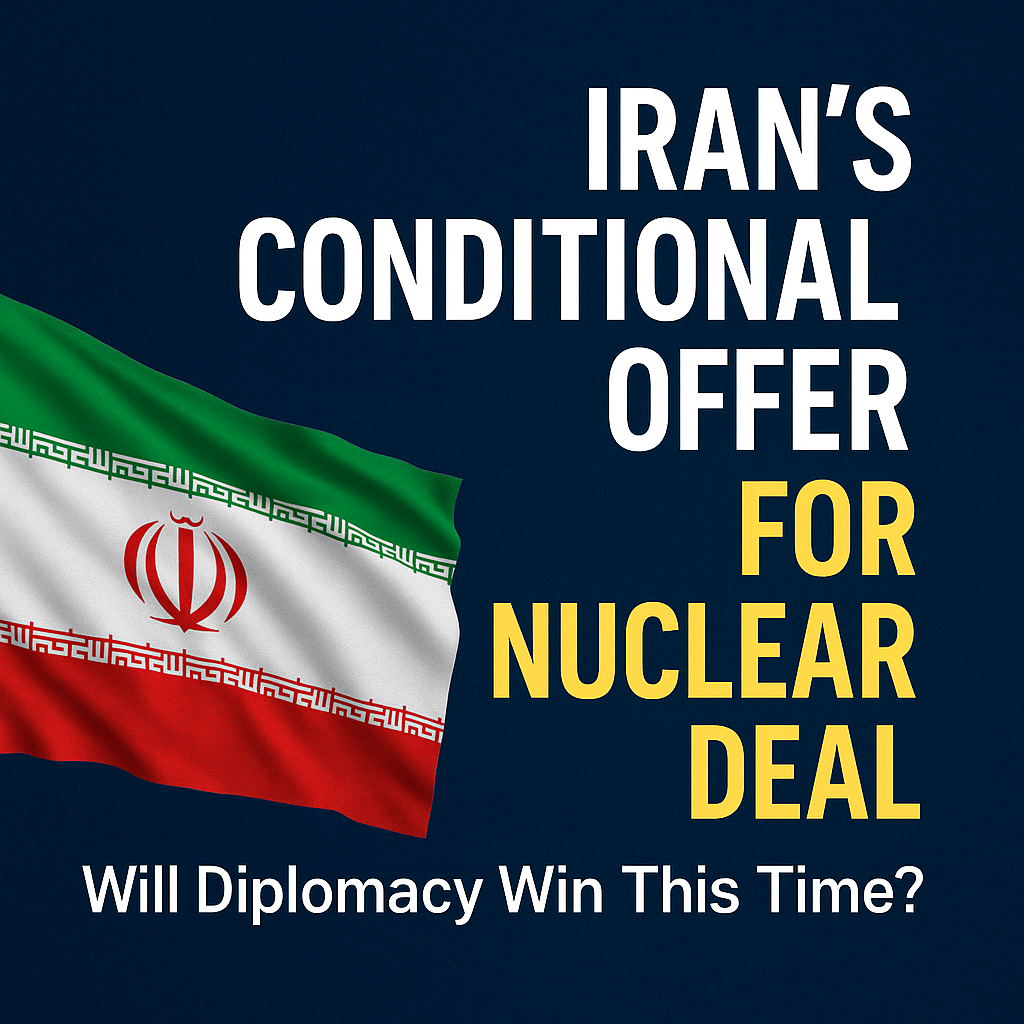Iran’s Conditional Nuclear Deal Offer: Will Diplomacy Win This Time?
By Remedy Talks Editorial Team
Published: May 16, 2025
In the world of geopolitics, few issues have lingered as long or stirred as much tension as Iran’s nuclear ambitions. After years of stalled negotiations, sanctions, threats, and mistrust, a new chapter may be about to unfold—but only if the terms are right.
This week, Iran publicly confirmed its readiness to return to the negotiating table to discuss a renewed nuclear deal. But there’s a catch: the United States must first abandon what Iran calls its “military intimidation tactics.”
So, is this a breakthrough or just another round in the cycle of diplomacy and defiance?
Iran’s Renewed Position: Dialogue, Not Domination
On May 15, Iran’s Foreign Minister stated that the country is prepared for indirect negotiations in Oman with the United States. The tone, however, was firm. Iran made it clear that no progress will be made unless Washington drops its military posturing and provides binding commitments.
“We will not engage under the shadow of threats,” said Iran’s envoy, referencing past rhetoric from U.S. and Israeli leaders about the possibility of using force if diplomacy fails.
Iran wants three core guarantees:
- No threat of military action or regime change
- A binding U.S. commitment that any future administration will honor the deal
- Immediate relief from sanctions that have crippled Iran’s economy for years
These demands reflect deep-seated distrust. After all, the U.S. pulled out of the 2015 nuclear agreement (JCPOA) under President Trump, despite Iran’s initial compliance.
What the U.S. Wants
The Biden administration, while more open to engagement, maintains its bottom line: Iran must not come close to producing a nuclear weapon. Talks about lifting sanctions are on the table, but only if Iran significantly rolls back its uranium enrichment activities and reopens nuclear facilities to full inspections.
However, Washington remains hesitant to guarantee that future administrations will stick to any new agreement—one of Iran’s key conditions.
This is the impasse: Iran wants security and economic stability; the U.S. wants nuclear containment and transparency. Both have valid concerns, yet neither wants to blink first.
The Role of Regional and Global Players
One interesting shift in the current landscape is the involvement of Qatar and Oman, two countries that have maintained relations with both sides. These Gulf nations are now stepping in as intermediaries, quietly working to keep the backdoor channels open and prevent miscalculations from turning into military conflict.
Meanwhile, Israel remains firmly opposed to any deal that allows Iran to keep any enrichment capabilities, continuing to lobby Washington for a more hardline stance. This adds pressure on the U.S. to walk a tightrope between diplomacy and deterrence.
A Possible Path Forward—Or Just More Stalemate?
Despite the renewed talks, there’s no guarantee they will lead to a deal. Iran’s internal politics are complicated, and any move seen as capitulating to Western demands could trigger backlash at home. Similarly, the U.S. faces election-year pressures and fierce partisan divides on foreign policy.
So, will this round of talks succeed?
There are a few signs of cautious optimism:
- Iran’s leadership is under growing economic pressure from sanctions, particularly as inflation and unemployment soar.
- The U.S., embroiled in multiple global flashpoints, wants to avoid another Middle East conflict.
- Both sides acknowledge that a military confrontation would be catastrophic.
But optimism must be tempered by history. The same conditions that make a deal appealing also make it fragile. Without mutual trust and enforceable commitments, even a signed agreement could crumble again under political change or strategic missteps.
Why It Matters to the World
The implications of these talks extend far beyond Tehran or Washington.
A successful agreement could:
- Stabilize oil markets and reduce global energy prices
- Lower the risk of open conflict in the Middle East
- Reinforce the role of diplomacy in a world increasingly driven by confrontation
On the other hand, failure could:
- Accelerate Iran’s nuclear progress
- Prompt pre-emptive strikes by regional actors
- Trigger a new round of proxy wars and instability
For developing countries and global citizens alike, the outcome will shape everything from fuel prices to international security over the next decade.
Conclusion: Diplomacy’s Narrow Window
Iran’s demand for a deal free of threats is not unreasonable—but it’s also not simple. The U.S. wants assurance that Iran won’t become a nuclear-armed state. Iran wants to live without the constant fear of war and economic ruin. Both goals are possible, but only with patience, pressure, and political will.
As the two nations circle the negotiation table once again, the world watches. Will this be a moment of genuine progress—or another missed opportunity marked by mistrust?
Time, as always, will tell.
Remedy Talks Editorial Note:
This blog post reflects developments as of May 16, 2025, based on verified reports from BBC, AP News, and The Guardian. We aim to present balanced, timely perspectives on critical global issues that affect everyday lives across the world.
